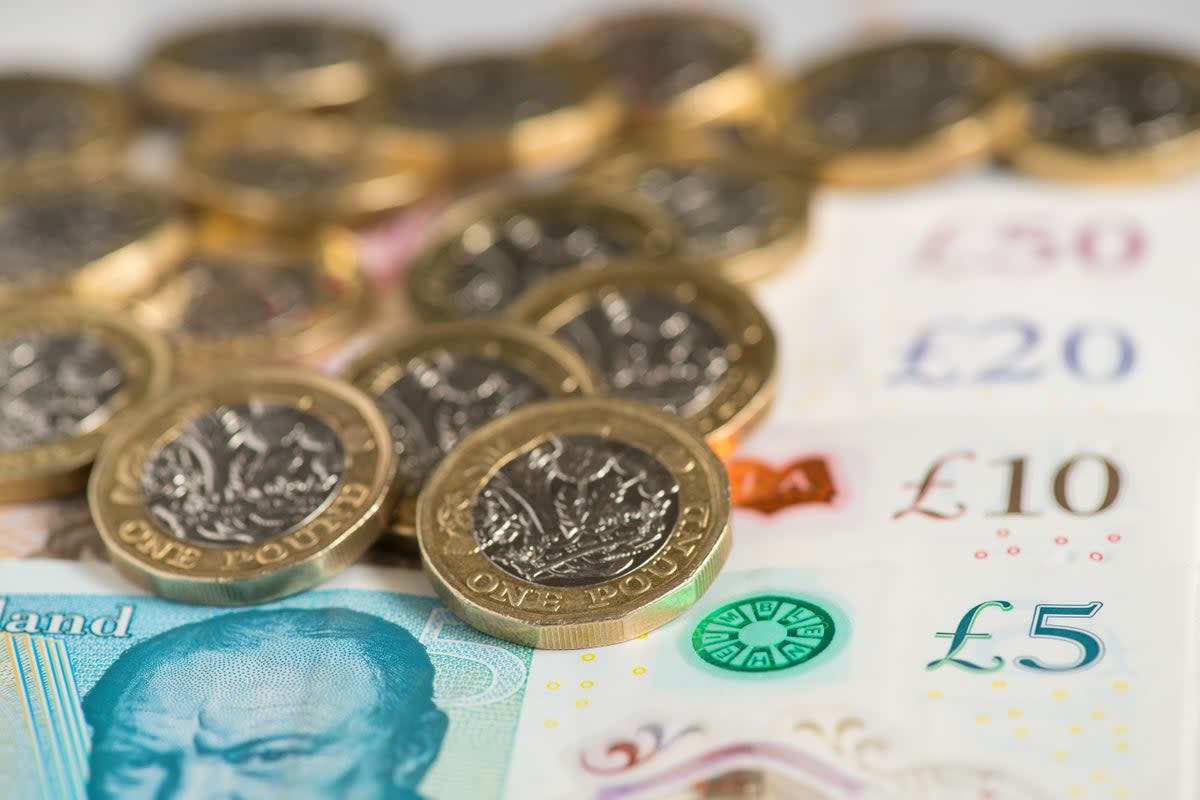What is the national minimum wage and how is it different from the living wage?

About 130,000 Londoners will get a 10 per cent pay rise due to the increase in the London living wage.
The £1.20 hourly increase is the biggest jump ever for the Living Wage Foundation's London rate, taking it from £11.95 to £13.15. About 3,500 organisations have signed up to the Living Wage Foundation’s London living wage.
The foundation sets a new real living wage every year, which is higher than the Government’s national living wage (NLW). The latter used to be called the minimum wage.
The LWF said its real living wage is a more accurate calculation of rising living costs – and it sets a special rate for London workers to reflect the capital’s higher costs. Outside London, the rate has increased from £10.90 to £12.
It is expected there will also be an increase in the national living wage to at least £11 an hour from April 2024. Companies are legally required to pay NLW but not the London living wage.
The Conservatives said the move would benefit two million of the lowest paid.
The national minimum wage is the minimum pay per hour almost all workers are entitled to, whereas the national living wage is higher than the minimum wage – workers get it if they’re over 23.
In June, the BBC reported that more than 200 companies, including WH Smith, Argos and Marks & Spencer, had previously failed to pay workers the minimum wage. The companies faced fines of nearly £7 million and were expected to reimburse affected workers promptly. However, the named companies said the breaches were unintentional and had been rectified quickly.
M&S, for example, said that the error occurred when temporary staff were not paid within the timeframe set out by minimum wage regulations. WH Smith, on the other hand, said it misinterpreted rules governing reimbursing staff for uniforms..
Kevin Hollinrake, minister for enterprise, markets and small business, said at the time: “Paying the legal minimum wage is non-negotiable and all businesses, whatever their size, should know better than to short-change hard-working staff.”
What is the minimum wage?
The minimum wage – the full title of which is the national minimum wage (NWM) – refers to the legal lowest amount that UK employers must pay their workers per hour of work. It is a statutory requirement set by the Government to ensure that workers receive a fair and reasonable level of pay.
The minimum wage aims to protect workers from exploitation and ensure they receive an income that covers basic living standards.
The minimum wage rates in the UK are typically differentiated based on factors such as workers’ age and whether they are an apprentice. These rates are periodically reviewed and adjusted by the Government to reflect changes in living costs and other economic considerations.
How much is the minimum wage?
The Government increased the minimum wage and NLW on April 1, 2023 for the financial year 2023/24. The increases and current rates are as follows:
NLW (23+) increased by 9.7 per cent, from £9.50 to £10.42.
Minimum wage (21-22) increased by 10.9 per cent, from £9.18 to £10.18.
Minimum wage (18-20) increased by 9.7 per cent, from £6.83 to £7.49.
Minimum wage (under 18) increased by 9.7 per cent, from £4.81 to £5.28.
Apprentice rate increased by 9.7 per cent, from £4.81 to £5.28.
The accommodation offset (which comes into effect when workers lives in accommodation provided by the employer, which charges them for this) increased by 4.6 per cent, from £8.70 to £9.10.
What are the national and real living wages?
The national living wage is higher than the national minimum wage – workers get it if they are over 23.
The real living wage is an hourly rate based on the basic cost of living in the UK. But, unlike the legally enforceable national minimum wage, whether or not to pay the real living wage is a voluntary decision for an employer. The UK real living wage is £10.90 an hour excluding London.
What is the London living wage and how much is it?
The London living wage (LLW) is a voluntary hourly wage rate that is calculated independently by the Living Wage Foundation. It is designed to reflect the higher cost of living in London compared with other parts of the UK. The LLW is not a statutory requirement, but many employers in London choose to pay their workers this higher rate as a commitment to fair pay.
The Living Wage Foundation calculates the LLW based on the actual cost of living in London, taking into account factors such as housing, transport and other basic expenses. The LLW is intended to provide workers with a wage that allows them to cover their essential needs and maintain a decent standard of living in the capital city. The exact amount of the LLW can vary and is updated annually. You can check future amounts on this website.
Why did the Government increase the national living wage?
Chancellor Jeremy Hunt announced in his autumn statement in November 2022 that the NLW would increase in 2023.The increase was encouraged by the Low Pay Commission, the independent body that advises the Government on the payment. Its recommendations ensure the NLW stays on track to reach the Government’s target of the wage being two-thirds of median earnings by 2024.

 Yahoo Movies
Yahoo Movies 
